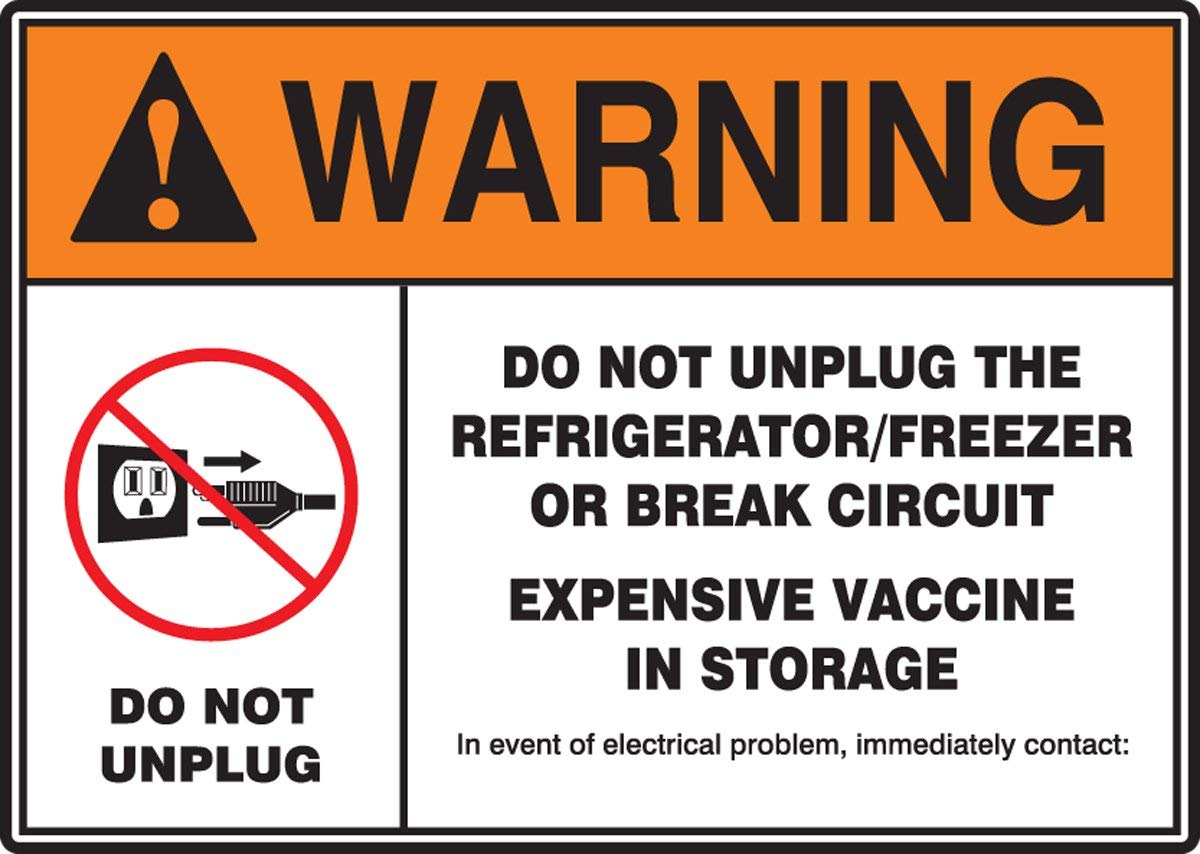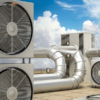Introduction
Maintaining proper vaccine storage temperature is critical for both the welfare of the patient and keeping vaccine costs down. Failure to store and handle vaccines properly can reduce vaccine potency, resulting in inadequate immune responses in patients and poor protection against disease.
The vaccine cold chain is a temperature-controlled environment used to maintain and distribute vaccines in optimal condition . The cold chain begins with the cold storage unit at the manufacturing plant . It extends through transport of vaccines to the distributor and delivery to and storage at the provider facility . Finally, the cold chain ends with administration of vaccine to the patient . Appropriate storage and handling conditions must be maintained at every link in the cold chain. – CDC
Every year, several billion of dollars worth of vaccines are shipped to tens of thousands of medical providers in the USA alone. Each year doctors are forced to dispose of millions of dollars worth of those vaccines because they became either too warm or too cold while in storage. The worst part? It could have been prevented for less than a few hundred dollars!
According to a recent NIST study, vaccines that have not been removed from their packaging (usually a cardboard box), retain their temperature longer than those that have been unpacked and placed in trays or on fridge shelf without packaging. – NIST
Here are 5 simple steps you can make today to ensure proper vaccine storage temperature.
1. Secure Power Source
The power source for your vaccine storage fridge should be safe, secure and reliable. If you do not have a dedicated breaker/outlet, make sure nothing can trip the breaker and make sure employees can not easily unplug the fridge power.
Using a simple outlet securing device can protect from fire, electrocution and accidental unplugging of vaccine fridge and freezer.
Cost: About $10
Bonus: Consider adding a few highly-noticeable “do not unplug” stickers for vaccine fridge and freezer power outlets and breaker boxes:
2. Optimize Vaccine Fridge/Freezer Performance
While quality and reliability of vaccine fridge/freezer units vary greatly between brands and time in service, there are some things you can do right this moment that will help to maintain adequate performance.
Make sure your vaccine fridge/freezer is far enough away from the wall for air to circulate around the coils, which are located on the back of the unit. Shoot for about 6-8 inches.
If your vaccine fridge/freezer is located in an unusually warm room or in a space with poor ventilation, consider adding a dependable (and ultra-quiet) high-flow blade-less fan to the room. Caution: do not plug the fan into the same circuit as your vaccine fridge/freezer.
Once a month, clean the coils on the back of your vaccine fridge/freezer. If you do not have a vacuum with a hose attachment, consider buying a fridge coil brush cleaner for about $10
Your coils will become much dirtier if the environment is more humid or there is more dust/dirt in the air.
If you are in the market for a new vaccine fridge/freezer and ready to upgrade from something that may resemble a college dorm appliance for keeping old pizza edible, take a look at this vaccine fridge/freezer by AM-1 or this more affordable option for about $200
NEVER store any vaccine or temperature-sensitive medication on the door of the vaccine fridge/freezer. The temperature in this area is never constant, and generally warmer than other areas of the fridge storage area. Also, many people do not realize that the temperature inside a vaccine fridge varies greatly. The difference between an upper shelf and one on the bottom could be several degrees. If possible find one area where the temperature is in the correct range and stays constant for storing your vaccines.
You may also consider adding a door lock ($20) or deluxe, self-aware door alarm for your vaccine fridge/freezer, ($39) as opening it too many times causes unnecessary strain on the unit and decreases overall stable temperature.
Finally, adding special ice packs ($13 for 4 ct.) inside the vaccine fridge/freezer will help maintain a consistent temperature for vaccines and medications. You can never have too many of these; the best part, if your power does go out, they can keep the temperature cooler inside for much longer.
3. Traceable Temperature Monitor & Data Logger
While we sell exclusive instruments designed to monitor temperature within thousands of a degree, relative humidity (RH) within 1% and even differential room pressure; most vaccine storage (healthcare) facilities would be fine with an affordable alternative like the Thomas Traceable Refrigerator/Freezer Plus Thermometer, with 5mL Vaccine Bottle Probe, -58 to 158 degree F ($58)
The Thomas line of data loggers and temperature monitors for vaccine storage are feature-packed for the price. However, when you are ready for features like remote alarms, text alerts, automated emails/phone calls, etc. you can upgrade to one of our professional instruments. Make no mistake, however, the Thomas Traceable Refrigerator/Freezer Plus Thermometer is suitable for most healthcare applications, clinics and even hospitals.
With the Thomas Instrument, you can accurately (±1.0°C) monitor temperatures in freezers, water baths, heating blocks, incubators, and refrigerators with the enclosed temperature-buffered sensor.
The included bottle insulates the temperature sensor from rapid temperature changes when the refrigerator door is opened. The triple display simultaneously shows high, low, and current temperatures; min/max monitors high/low readings overnight, on weekends, or for any time period-a significant advantage over current reading-only glass thermometers.
The range is for this thermometer is -58 to 158 degree F with a resolution of 1 degree and accuracy of ±1.0°C. The alarm feature provides an audible alert when temperature rises above or falls below a set point. This alarm ca be adjusted in 1 degree increments. The visual and audible signals continue even if temperature returns to non-alarm range.
The ten-foot micro-cable permits refrigerator doors to close on it. The solid-state probe eliminates mercury contamination in refrigerators. Probe is sealed in a miniature bottle (1 x 2.5″) filled with nontoxic glycol.
To assure accuracy an individually serial-numbered Traceable certificate is provided from our ISO 17025 calibration laboratory accredited by A2LA. It indicates traceability to standards provided by NIST (National Institute of Standards and Technology). Mounting hardware includes a slot for wall mounting, and Velcro and magnetic strips to attach bottle unit to any surface. Check full specs here.
Although the Thomas Temperature Monitor is accurate, it is recommended that users also keep a dedicated vaccine temperature log book on site, near the vaccine fridge/freezer ($5), as advised by the CDC and Vaccines For Children (VFC). Our TV2 system can automate this process with its electronic data log.
4. Reliable Power Supply
Okay, so by now you have ensured you are monitoring temperatures with a temperature data logger, your vaccine fridge/freezer is running optimally, you have secured your power outlet, and marked all outlets with a sticker. All this and you’ve only spent a little over $100.
The next thing to do is to ensure you have backup power for those times when power may fail. There are many options out there, some more “robust” than others, but any Uninterruptible Power Source (UPS) for your vaccine fridge/freezer will eventually more than pay for itself.
5. Have a contingency plan in place.
For many small and medium sized healthcare facilities, adding an additional vaccine fridge/freezer offsite is a great way to protect vaccine efficacy and prevent costly loss. You may have a backup power supply (USP) on site, and your facility may even have a backup generator – however, eventually, these too will fail.
To form a decent contingency plan, which the CDC and VFC require, you’ll need a couple of things. First, it helps to have a backup vaccine fridge/freezer in the case of a power outage that lasts longer than a couple of hours. This can be at a residence, or other offsite facility to which vaccines can be transported.
While in transit, you’ll want to use a cold storage transport device. For the cost, it is worth knowing your valuable inventory will be secured. If you buy a medical-branded one, it will cost a considerable amount of money. Off the shelf models have improved vastly from the old days of the camping/picnic cooler.
This OtterBox model ($299) is popular among cooler afficinados, is rated higher than more expensive YETI type coolers and more cost effective. If you’d like to go the cheaper route, here is one example for under $150.
As you can already see, spending just a few hundred dollars and developing sound preventative measures can go a long way to ensure your patients receive potent, and safe vaccines, and your practice may end up saving money by limiting unnecessary loss.
Nothing, however, is more effective than developing a plan of action to prevent loss, and to ensure vaccine efficacy during a natural disaster. Talk to your team and employees. Make sure you are all on the same page. Human error can ruin even the most well-thought-out plans. The CDC has an excellent Vaccine Handling and Storage Toolkit to help you put your plan together.



